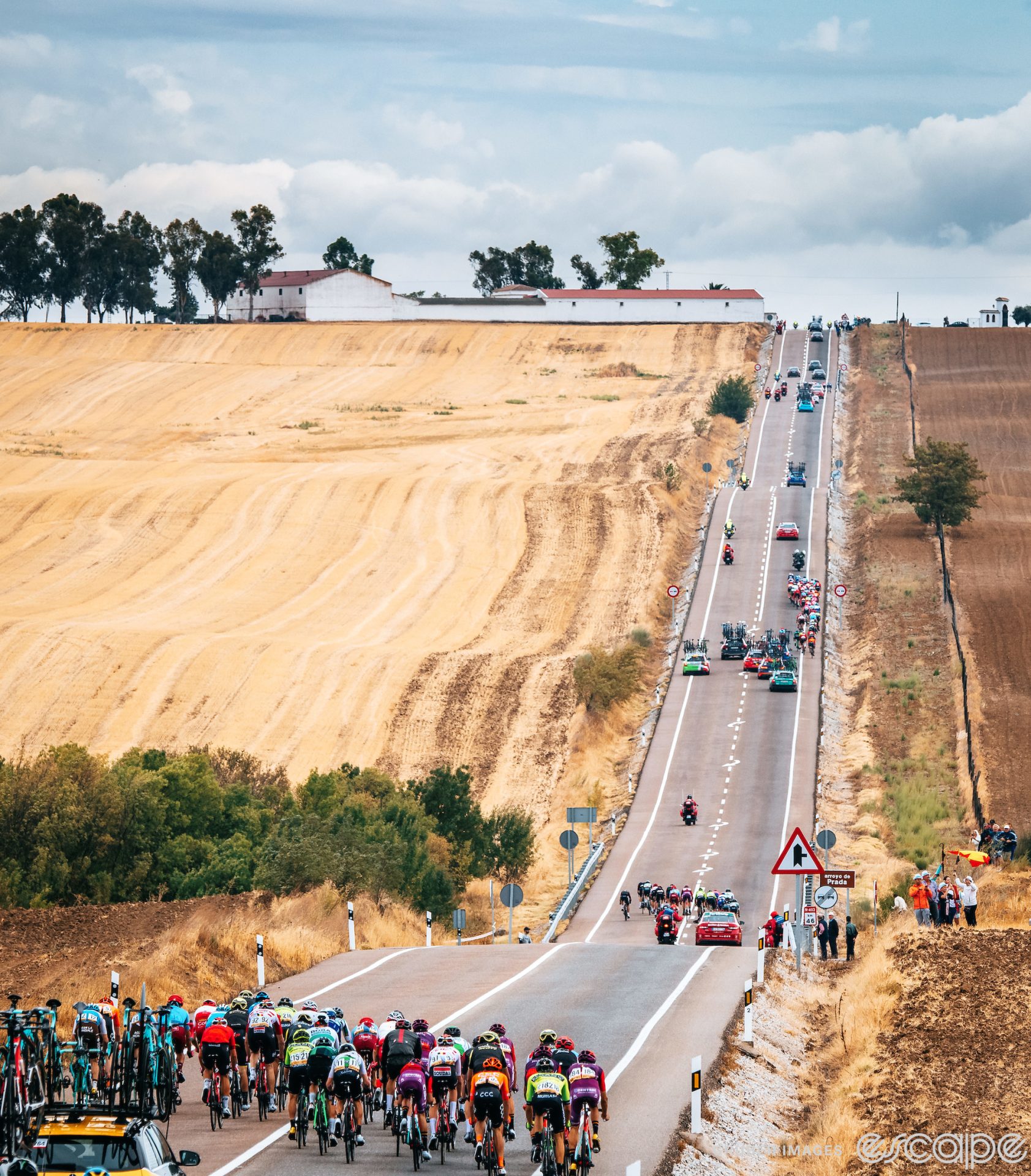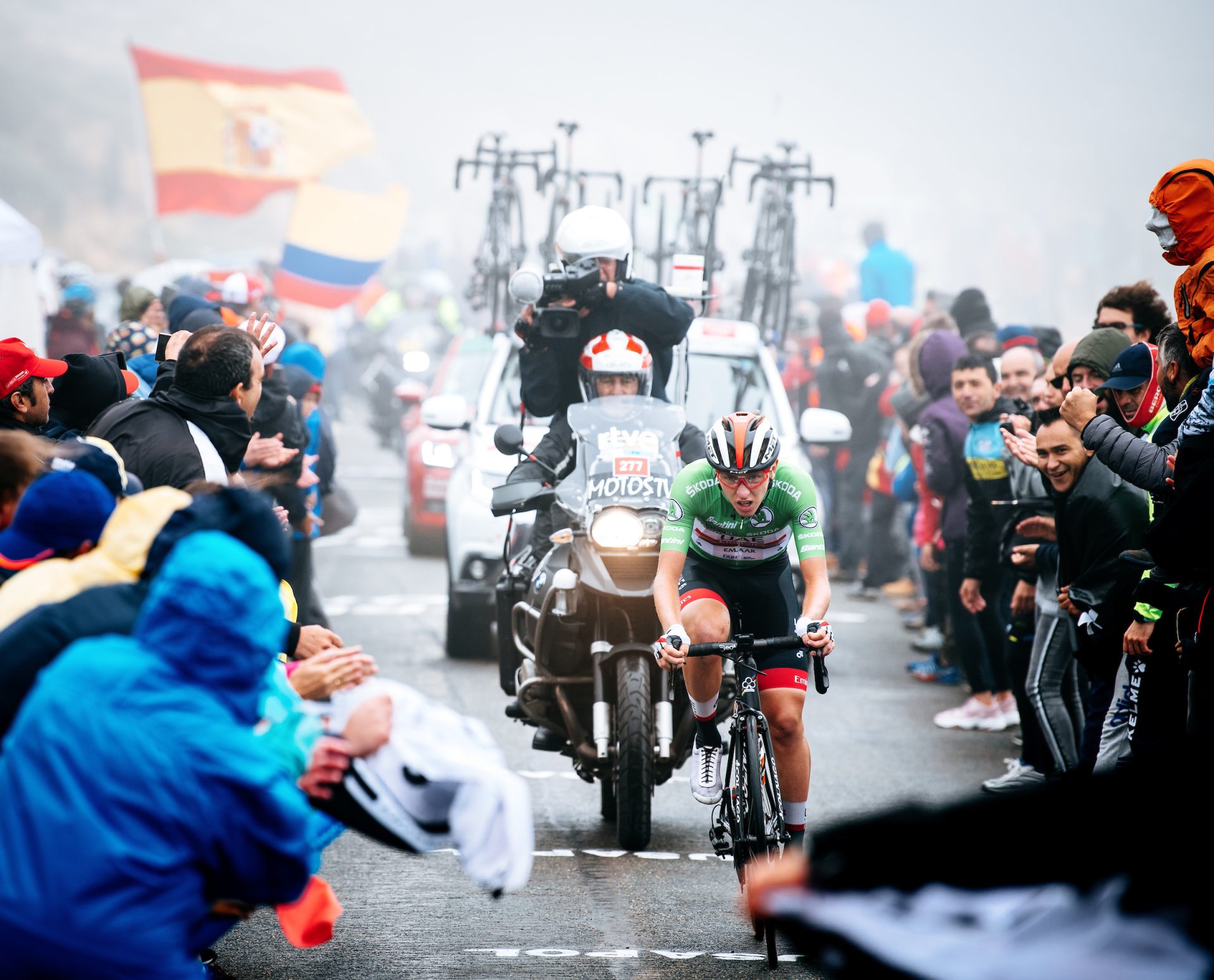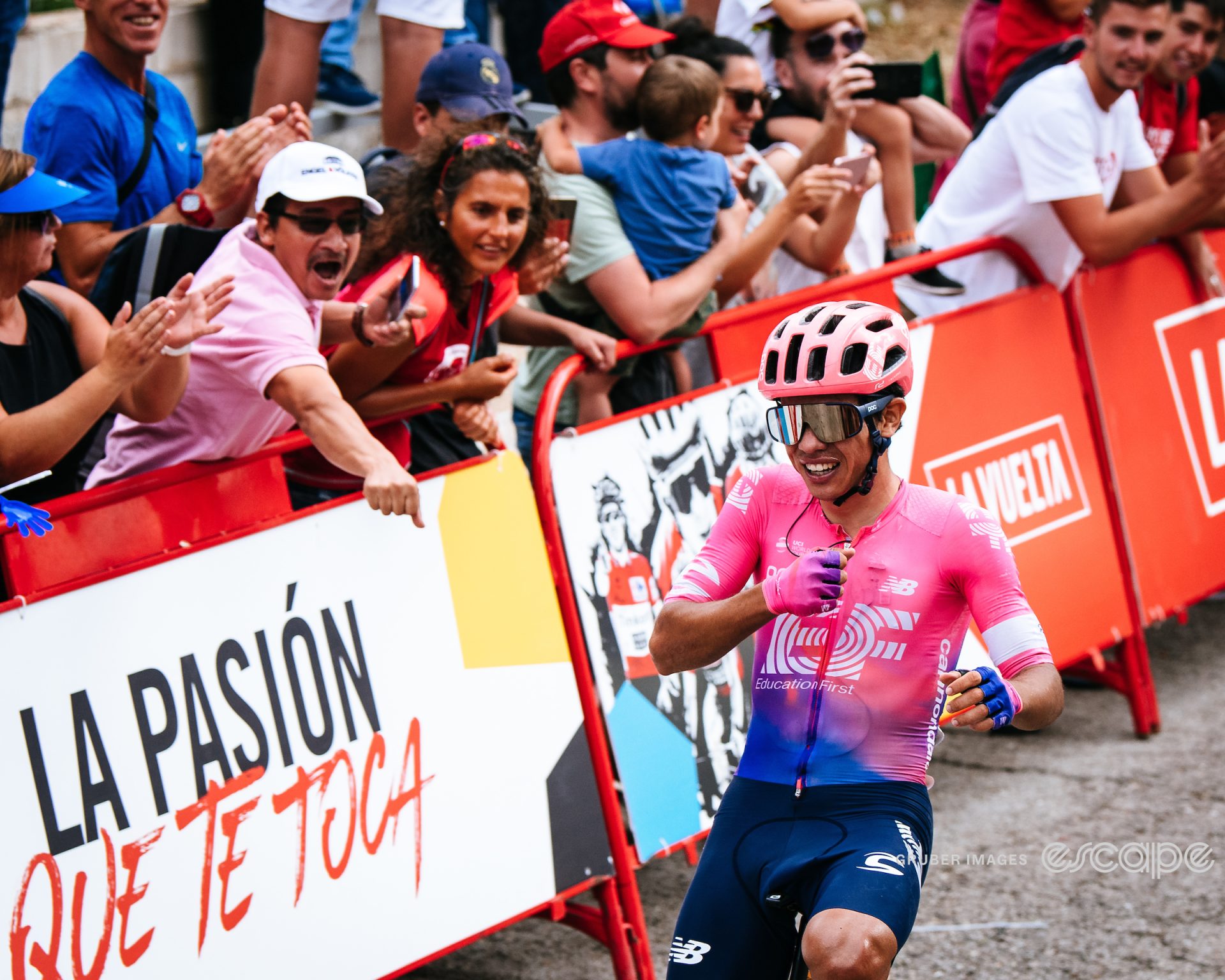Can we talk about the Vuelta a España? And not just because it starts Saturday?
The third Grand Tour is the plus one of pro cycling: always at the wedding, but clearly tagging along with an invited guest. The Vuelta is the youngest of the three races, and has always felt a little more restless, a little overlooked, and the maillot rojo has less of the fable and reverence of the maillot jaune or maglia rosa, for instance. And while the Giro d’Italia in May and the Tour de France in July are immutable constants, in 1995 after 60 years of existence the Vuelta was shoved out of its initial May home to the baking heat of August in favor of the Giro.
In a normal year, the Vuelta at least serves as ideal race training for World Championships. This season, Worlds are done already and so are many riders; aside from a few one days or minor stage races, they’re checked out until winter training camp. Many others have already signed new contracts, leaving them even less reason to literally risk their skin riding on lame-duck deals with their current squads. And many of those who are here racing for the win are doing so a little bit in desperation, as their seasons haven’t gone to plan. In other words, on paper, the Vuelta in this season especially should be a sleepy affair.
But it almost certainly won’t be, and all of that is what makes the Vuelta so great.
The route is ?
The late-season slot is actually a bit of genius. The organizers work a little bit harder to create interesting courses, for one. It’s not an accident that some of the relative “innovations” of stage racing like short mountain stages were first tried at the Vuelta; the 2023 route features two. And while it shares this credit with the Giro, the super-steep summit finishes fans love are thanks to experiments like the Angliru, first used in 1999 and making an appearance again this year on stage 17.
Even more than the Giro, the Vuelta has leaned into moar climbing. This year’s race features eight summit finishes, or almost 40 percent of the stages. Throw stage 8 and stage 15’s late ascents close to the line, and stage 16’s short but steep climb to the finish at Bejes, and then take a peek at the 10 – count ‘em, 10 – climbs on that beast of a stage 20, and tell me that the course setters don’t have something against sprinters. The festivities start early, on stage 3, and don’t end until that 207.8 km monster the day before Madrid. That “balanced” course we loved from this year’s Tour de France? That’s the Vuelta’s influence again. This year we kick things off with a team time trial for the second year in a row. Never change, Unipublic.

Climber cage match
And whomst do we have to watch on all those sawtooth route profiles? Only the deepest GC field of the year.
The Tour had the Jonas and Tadej Show, Season 3. The Giro (for nine stages, anyway) was Remco v. Roglič, with Geraint Thomas nearly playing spoiler. The Vuelta? How about four of those five, plus a host of second-tier threats.
The matchup of Evenepoel and his possibly undergunned Soudal Quick-Step team against a sweep-motivated Jumbo-Visma – a roster of hitters with six Grand Tour wins – should be fascinating. Will we see the dynamic Evenepoel denied by Jumbo’s team strength, and if so, what does that mean for his much-discussed wandering eye for a possible new home? Pogačar may not be racing, but UAE Team Emirates has two solid leaders in João Almeida and Juan Ayuso – who finished third last year on GC at just 19 years of age(!) – backed by solid climbing depth in Jay Vine and Marc Soler.
Now comes Geraint Thomas, a mere 14 seconds from being just the second British racer ever to win the Tour and the Giro, 37 years old and not said to be retiring, but also still in contract talks with Ineos Grenadiers over an extension. With him, a strong, balanced team doubtless eyeing that opening team time trial.
Enric Mas is here, as is Romain Bardet, both crash-DNFs from the Tour looking for a rebound. Bahrain brings Santiago Buitrago and Damiano Caruso to rekindle their Giro performances. What will Bora’s Aleksandr Vlasov and Sergio Higuita do? No one knows; that’s the fun in it. All told, even in the absence of an injured Richard Carapaz, that’s 12 guys who might have some kind of shot at the podium, and we haven’t even talked about possible surprises.

Debutants ball
And speaking of Buitrago, let’s talk about the kiddos. The Vuelta, as the most “relaxed” of the three Grand Tours, is a perfect place for young pros to get stuck in for a first three-week race. This year there are plenty of promising young faces making debut Grand Tour appearances: the Groupama duo of Romain Gregoire and Lenny Martinez; Bora’s Cian Uijtdebroeks; Kevin Vauquelin of Arkea; EF’s Andrea Piccolo and Marijn van den Berg; and DSM’s British duo of Max Poole and Oscar Onley lead the list (in fact, DSM’s whole roster skews young, with Sean Flynn and new U23 World TT champion Lorenzo Milesi also starting their first Grand Tours).
No, I’m not tipping any of these guys for the podium. But for breakaways and a possible stage victory? Heck yeah, line ‘em up. Climbers (Ayuso last year), sprinters (Jasper Philipsen in 2020), some kid named Pogačar in 2019, you name it. Nevermind the Tour de l’Avenir; the Vuelta is where young talent comes to break out.
Or talent of any age. The Vuelta is where Jay Vine popped up last year with two stage wins in the first week. In 2011, then 26-year-old Chris Froome saved his career from the oblivion of being a mid-pack domestique and owner of a career-best GC finish (to that point) of 15th in a 2.PRO or higher event, snagging his first of seven Grand Tours. Holy Freewheeling Jesus, the Vuelta is where Chris Fucking Horner won in 2013. At 42 years old!
In this essay I will …
And that’s my main point about the Vuelta. The combination of the brutal course; the willingness of teams to use it as a first shakeout for young, promising talent; and the last-chance-saloon element for riders whose season went sideways and need a result and maybe a contract makes for completely unpredictable racing. You absolutely, positively, never know what tomorrow will bring at this race.
The Tour is the granddaddy of them all; the Giro is the race that romantics of the sport fall in love with. Against them, what can the Vuelta possibly bring to hold our attention? Well, how about everything?
Did we do a good job with this story?

